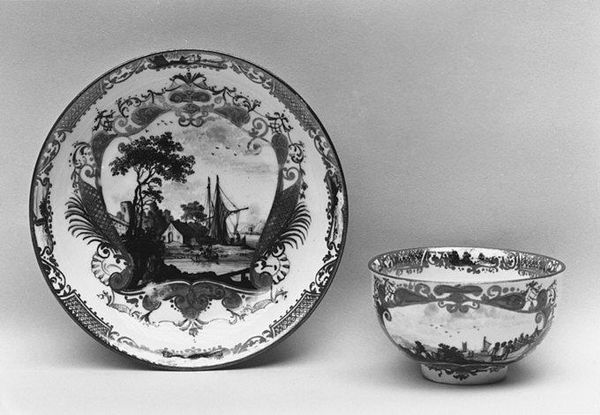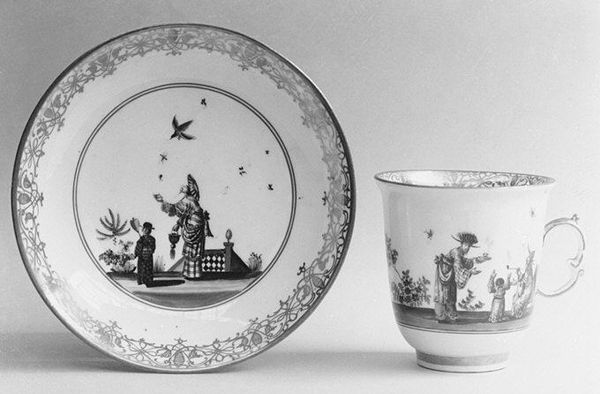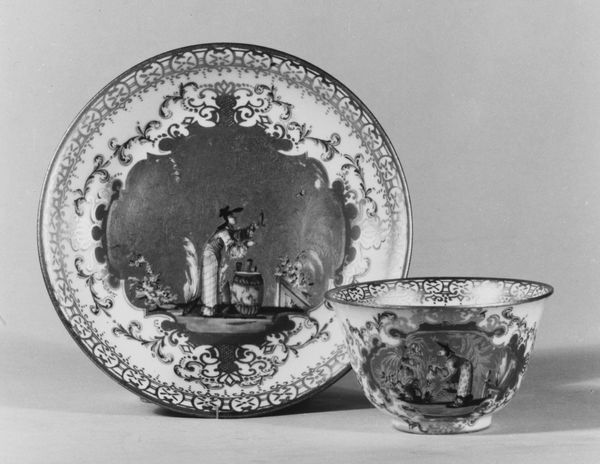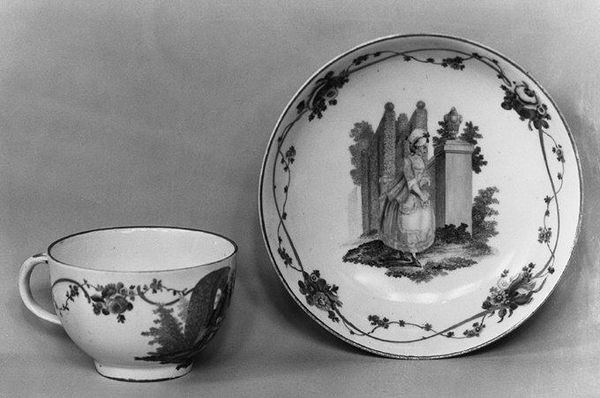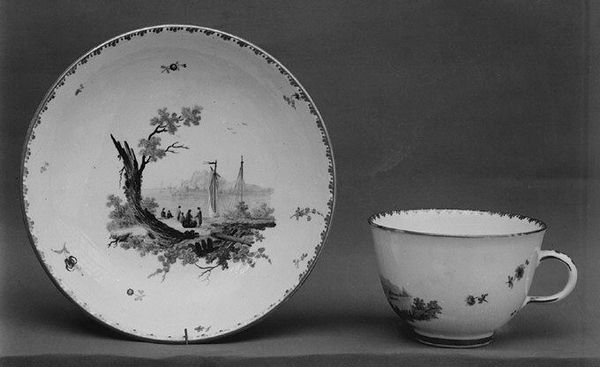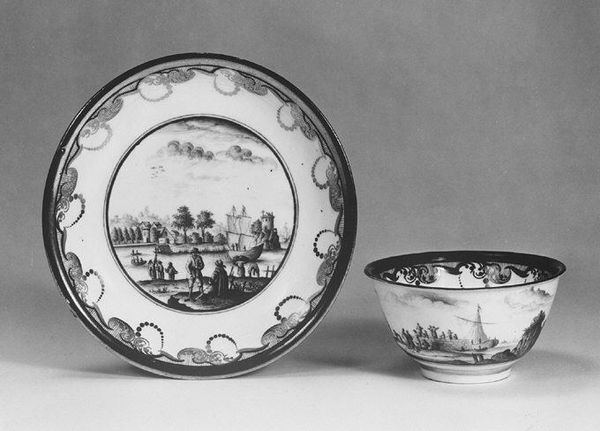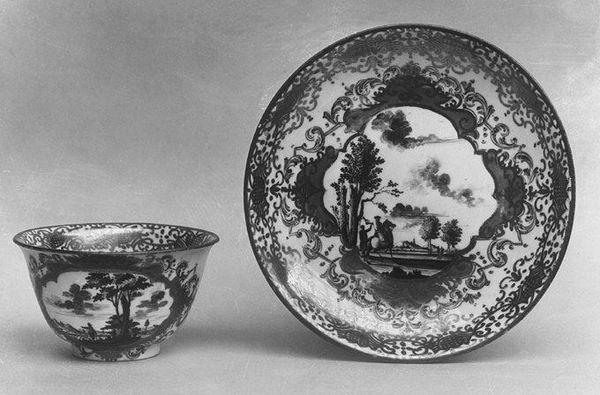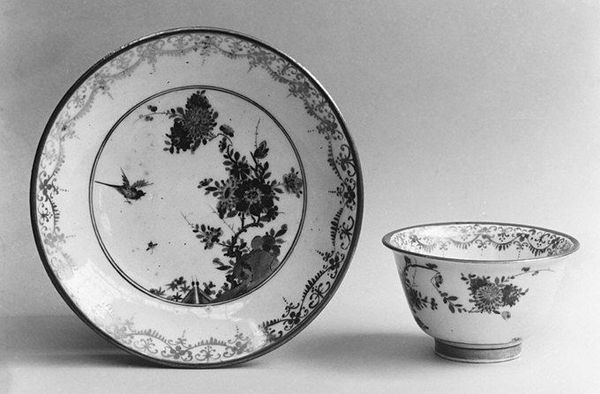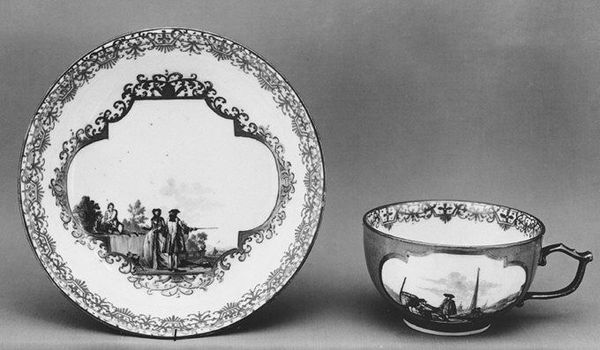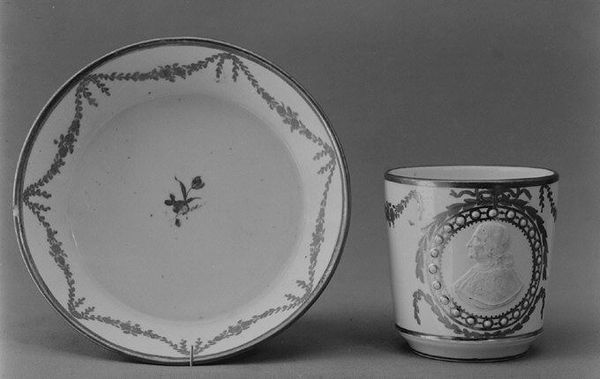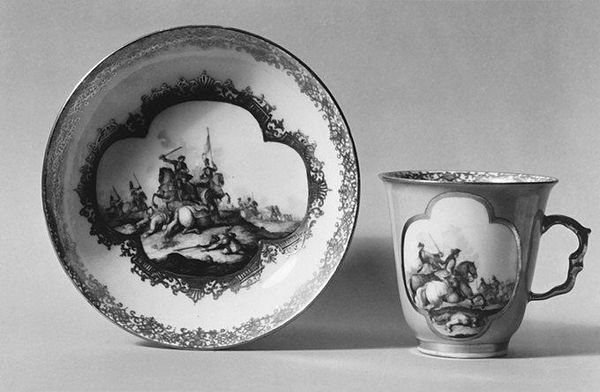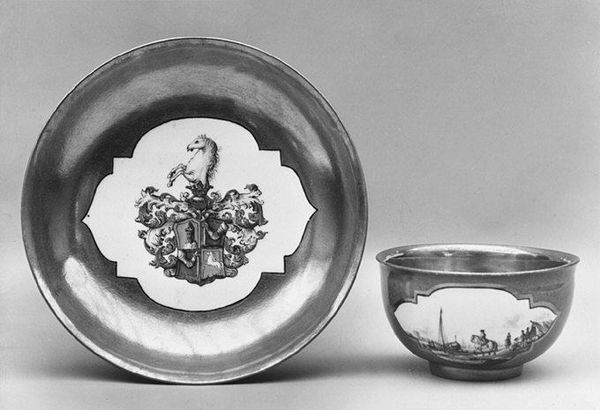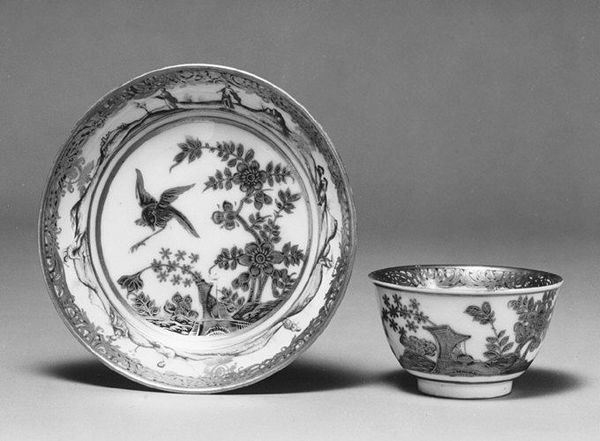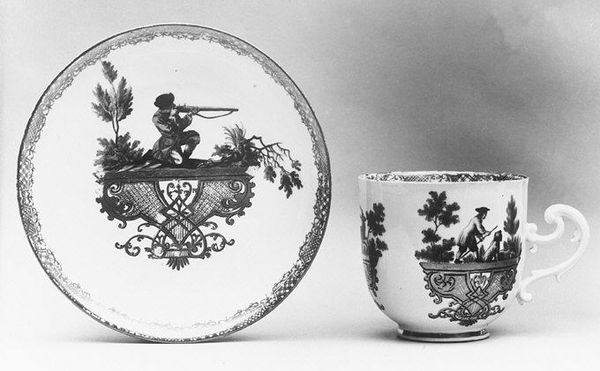
ceramic, porcelain, sculpture
#
asian-art
#
ceramic
#
porcelain
#
sculpture
#
decorative-art
Dimensions: Overall (teabowl .64): 1 3/4 × 2 7/8 in. (4.4 × 7.3 cm); Diameter (saucer .65): 2 7/8 in. (7.3 cm)
Copyright: Public Domain
This porcelain teabowl and saucer were produced by the Meissen Manufactory, likely in the first half of the 18th century. They reflect Europe’s fascination with the East, a phenomenon known as ‘chinoiserie’. The image on the saucer depicts a figure who might be imagined as Chinese, surrounded by stylized plants. It’s unlikely that the artists had any real knowledge of Chinese culture. Instead, they relied on widely circulated – and often distorted – images and descriptions. Meissen, as the first European producer of porcelain, played a key role in shaping this visual language. Such objects were luxury goods, coveted by the European aristocracy. They speak to the power of trade and colonialism in shaping artistic production. To understand this teabowl fully, we might consult trade records, travelogues, and early studies of Asian cultures. By placing this object in its social and historical context, we reveal the complex dynamics of cultural exchange and appropriation.
Comments
No comments
Be the first to comment and join the conversation on the ultimate creative platform.
